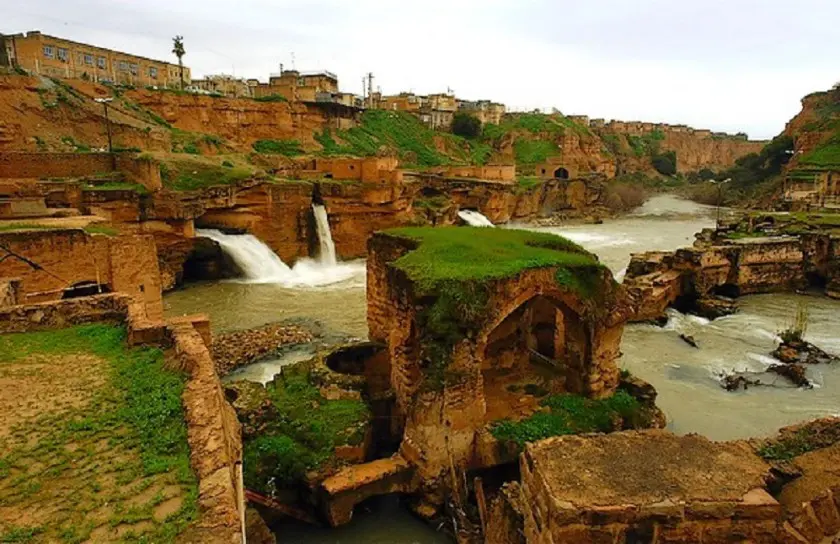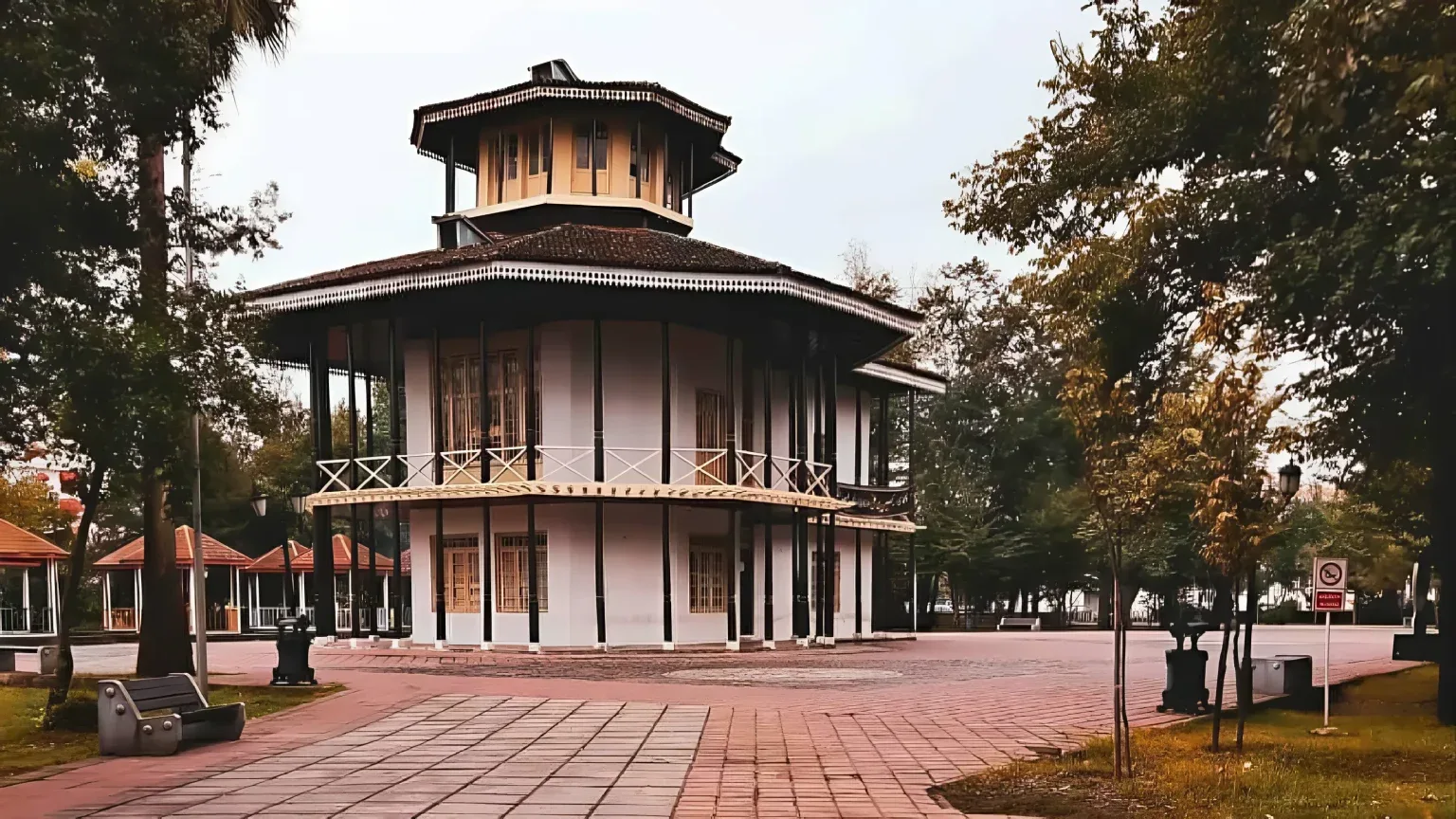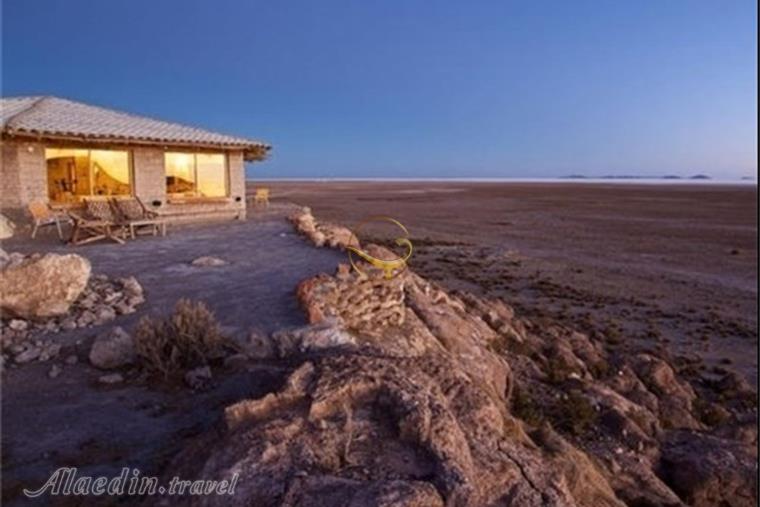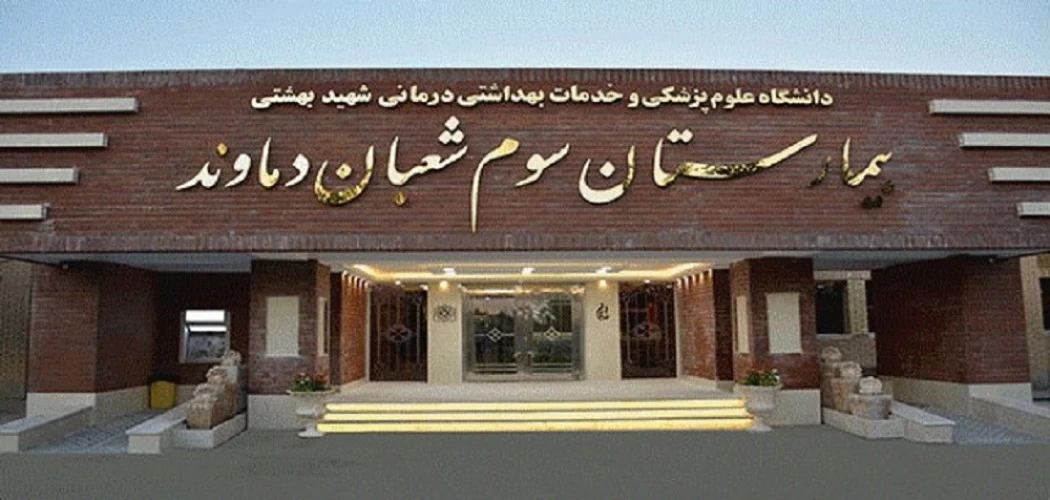Travel guide to Shushtar | All You Need
A trip to Susa is different because you are traveling to one of the first civilizations in the region, where one of the oldest traces of history in Iran is located. Khuzestan is one of the most beautiful provinces in Iran, which is a good choice for traveling in winter. The spring and Mediterranean climate of this province in cold seasons makes Khuzestan one of the most beautiful places to visit in Iran in winter. Today in the Gulf Citypedia, let’s review a trip to Shushtar together.
Shushtar: Where is it and what is it famous for?
Shushtar is a city in the Khuzestan province of southwestern Iran. It is located on the banks of the Karun River, about 90 kilometers (56 miles) northeast of Ahvaz, the provincial capital. Shushtar is known for its ancient history, dating back to the Elamite civilization, and its impressive hydraulic system, which was built by the Sassanian Empire in the 3rd century AD. The city’s historical hydraulic system is a UNESCO World Heritage Site.
Traveling to Shushtar
There are three main ways to travel to Shushtar by public transportation: bus, train, and airplane. If you choose to fly, you will need to fly into one of the nearby airports, as Shushtar does not have its own airport. The nearest airports are Ahvaz Airport, which is about 90 kilometers away, and Dezful Airport, which is about 60 kilometers away.
If you are driving to Shushtar, the distance is about 800 kilometers from Tehran, and the drive will take about 10 hours.

Shushtar Local Food
If you enjoy trying new foods, Shushtar has a variety of delicious dishes to offer. One of the most famous dishes is Nan-e Charb, which is a type of bread that is traditionally served at weddings. Ash-e Gholghol is a hearty soup that is often eaten for breakfast. Other local specialties include Gholiyeh Beh o Anar (lamb stew with pomegranate), Polo Shushtari (Shushtari rice), Khoresh Aloo (plum stew), Dizy Shushtari (Shushtari stew), and Hommos Shushtari (Shushtari hummus). You can try some of these dishes at the Mostofi Museum Restaurant in Shushtar.
In addition to its delicious food, Shushtar is also known for its rich musical tradition. Many of the city’s gardeners, weavers, and architects are skilled musicians, and traditional singing is a popular pastime. Some of the most famous works of Shushtari music include the piece “Biya ta Gol Barafshanem” by Hossein Alizadeh and Alireza Eftekhari, the album “Raaz o Niaaz Baad Saba” by Hosamolsaltaneh and Mohammadreza Shajarian, and the poem “Malkolshoara Bahar” by Mohammadreza Shajarian.
Shushtari Local Music
In Persian music, the Shushtari گوشه (gusheh) is a mode (dastgah) in the Humayun system. A local melody is performed in the Shushtari gusheh for each of the Persian musical systems. If a Shushtari vocalist sings you the Shushtari melody, you have heard the real thing. In no other Iranian city do they have so many local melodies on the Persian musical systems. In each city, they only have local melodies on one or two of the Persian musical systems, that is, they sing local songs in accordance with one or two systems, but in Shushtar, they have local songs in accordance with all the systems.
Shushtari Handicrafts
The most prominent handicrafts of Shushtar are weaving and textiles. Shushtari brocade and Shushtari bird are among the most famous woven products of Shushtari artisans. Weaving, silk weaving, kilim weaving, jajim weaving, wheat stalk marquetry, and metalworking are other handicrafts of this city that you can bring with you as Shushtar souvenirs when you travel to Shushtar.
Best time to visit Shushtar attractions
Shushtar is one of the southwestern cities of Iran and has a hot and dry climate. So the summers are hot and the sun shines relentlessly.
If you can’t stand the hot southern weather, perhaps the best time to travel to Shushtar and visit Shushtar attractions is in the fall and winter or early spring. Shushtar is hot in spring and summer; but its nature is green and beautiful. Most of the places I have introduced do not charge an entrance fee, so you may not need to spend a lot of money.
Shushtar Sights
The passage of two important and water-rich rivers of Iran, namely Karun and Dez, has had a great impact on the history, ancient monuments and sights of Shushtar. The prosperity of agriculture, the history and the abundance of water in this city have led to the creation of remarkable water structures that many archaeologists around the world refer to as a masterpiece of ancient engineering in the world. The existence of these water structures in Shushtar County has given another color and scent to the history of this city.
Shushtar Water Structures
According to archaeologists’ guesses, the reason for the construction of the Shushtar water structures system was the need for water for agriculture during the Achaemenid era. In this structure, two canals, Gargar and Dariyun, have been dug and made to flow by hand, and their construction is also attributed to the Achaemenid period. It is said that during the Sassanian era, a great transformation took place in this region and this unique complex expanded. In addition to economic, agricultural and industrial uses, the Shushtaris also used this moat as a moat around their city.
The “Shushtar Mills and Waterfalls” complex is one of the unique examples in this field around the world. This complex, which was built in the past to make optimal use of water, consists of a large number of dams, tunnels, secondary canals and water mills. The basis of the complex works in such a way that the “Gargar Dam” blocks the path of the Karun River and raises the water level to fill three tunnels dug into the rocks. The three tunnels divide the water into several canals, which, after turning the wheels of the mills, the water flows into a pond in the form of waterfalls.
One of the very brilliant features of this structure is its proximity to the historical fabric of the city of Shushtar. In the past, these structures have had both economic and industrial uses and have also supplied drinking water to the city of Shushtar. Another unique feature of these structures is that the water, after passing through the mills, turns into beautiful waterfalls by flowing from the tunnels, which is a pity not to see if you travel to Shushtar. The Shushtar mills and waterfalls complex, given its construction time, is one of the technical and engineering masterpieces in the world.
So if your destination is Shushtar, you should not miss seeing the water structures.
Dariyun Canal
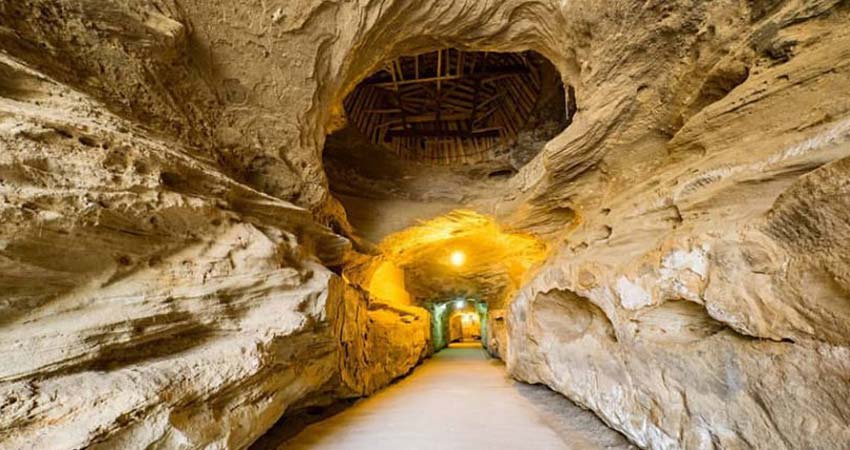
The Karun River is divided into two main branches, Shatit and Gargar. The Dariyun Canal is actually one of the tributaries of the Shatit, which after going around Shushtar, joins the Shatit again. This canal, with its beautiful natural surroundings, is another tourist attraction of Shushtar.
Mizan Dam
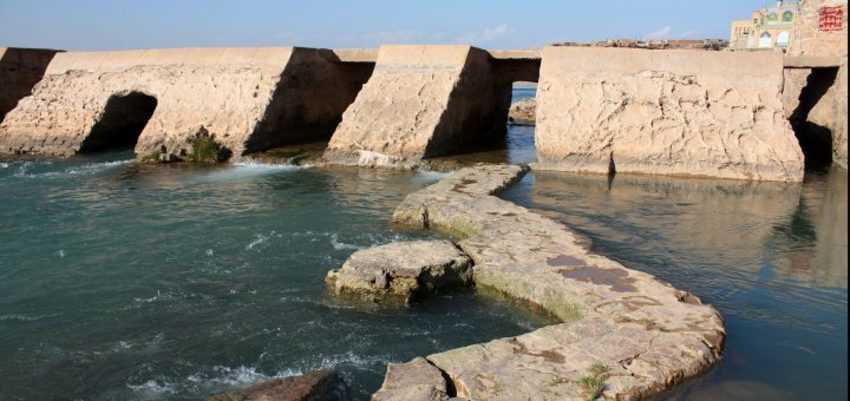
The Mizan Dam is one of the most important components of the Shushtar water structures complex. This dam is built on the Karun River and its function is to divide the water of the Karun River between the Gargar and Shatit rivers. The main materials used in the Mizan Dam are stone and mortar. The engineering masterpiece of the ancient period in the Mizan Dam becomes clear when we know that one of the dam’s openings is built for this purpose, so that if the flow of the Karun River exceeds a certain amount, with the use of this opening, the remaining water is directed towards the Shatit River.
You can reach and visit this dam from Shariati Street and Sharaf Boulevard.
Kolafrangi Mansion
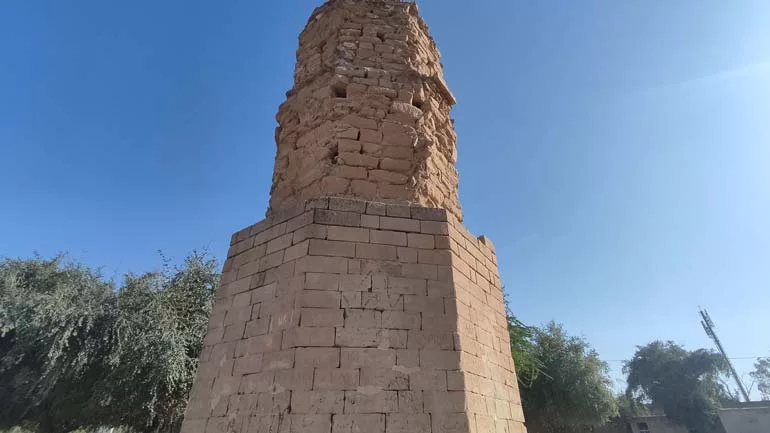
Although the Kolafrangi Tower or Mansion is not an independent water structure, it is one of the important structures of Shushtar County that is not unrelated to the water structures of this city. This watchtower, which was built in the Achaemenid period, was used to supervise the work of workers involved in the construction of the Mizan Dam.
The material used in this building is stone. Unfortunately, a large part of this building has collapsed over the course of history and only three meters of it remain.
Shadorvan Bridge
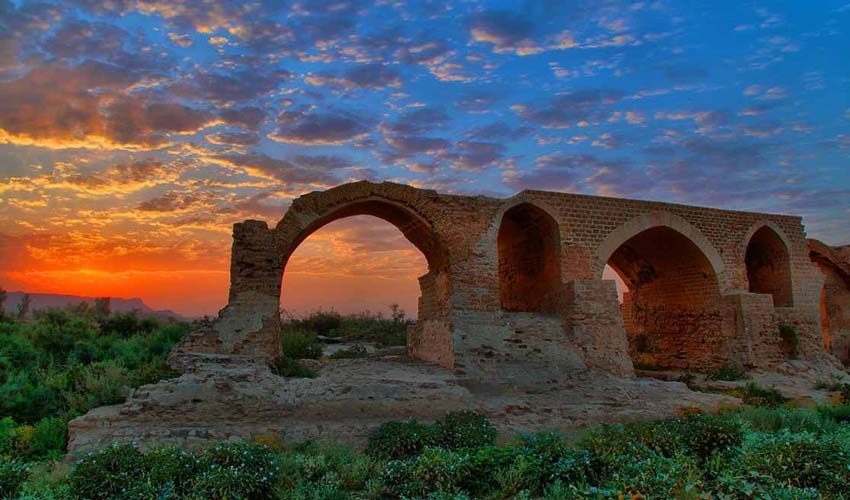
Do you also remember the poem “Salam to Khuzestan” from your school years when you hear the name of Shadorvan Dam? The same famous verse that said: “If the Shadorvan Dam broke apart from the fear of Caesar, behold, his hands and feet are in the last shackles, crying and weeping.”
This large bridge, which was about 500 meters long, was built on the main branch of the Karun River, 300 meters from the Mizan Dam. Today, many parts of this bridge have been destroyed.
Salsal Castle
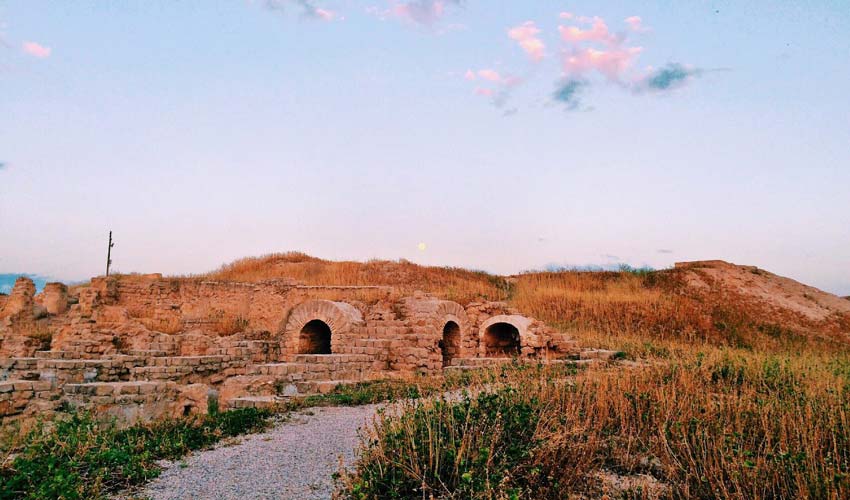
Salsal Castle is also considered another component of the Shushtar water structures because of the role it played in controlling the Dariyun Canal. Of course, the role of Salsal Castle in the history of Shushtar was not just to control and direct water.
This castle, like other historical castles, had the duty of defending the city. It is interesting to know that Salsal Castle was used for local governance from the time of its construction in the Achaemenid period to the time of Nader Shah Afshar.
Although unfortunately, many parts of this castle have been destroyed in the present day. But it can be said with certainty that this castle was a full-fledged and complete building for governance and protection of the city’s security.
Band-e Mahi Bāzān

Band-e Mahi Bāzān, which is located on the Gargar River, is another wonder of Shushtar County. To see this dam, go towards the village of Gavmish Abad. In fact, this dam is a clever use of a natural feature for human purposes. It is said that at the time of digging the Gargar River, the use of this natural phenomenon was considered to raise the water level and increase its pressure.
Band-e Lashkar
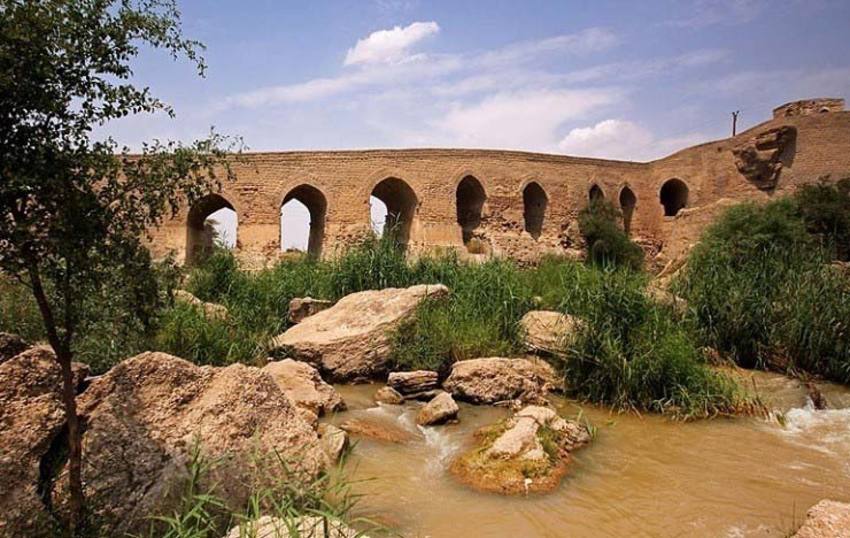
Band-e Lashkar is another component of the Shushtar water system that was built next to the Lashkar Gate. The length of this dam is 124 meters and its height is 8 meters. This dam is built on the Dariyun Canal. An interesting point about Band-e Lashkar is the cooling system of this structure. It is said that sometimes the temperature difference between the dam and the surrounding area reaches seven degrees Celsius.
Of course, the sights of Shushtar are not limited to its water structures. Shushtar has other attractions that I will talk about in the following.
Zoroastrian Dakhma
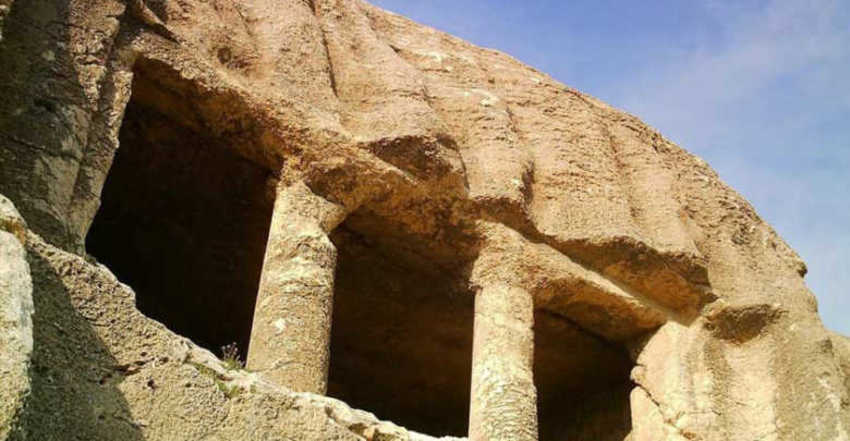
You must know that Zoroastrians believed that the body should return to nature after death and not much of it should remain. This belief has led to many historical cities in Iran hosting a special form of Zoroastrian cemetery, which is called Dakhma. One of the sights of Shushtar is the Zoroastrian Dakhma. These Dakhmas date back to the Median period.
Shushtar Jameh Mosque

Shushtar Jameh Mosque is one of the oldest post-Islamic monuments in Iran. The age of this mosque is estimated to be around 1200 years. This mosque is made of mudbrick and has several porches and courtyards.
Khan Garden of Shushtar
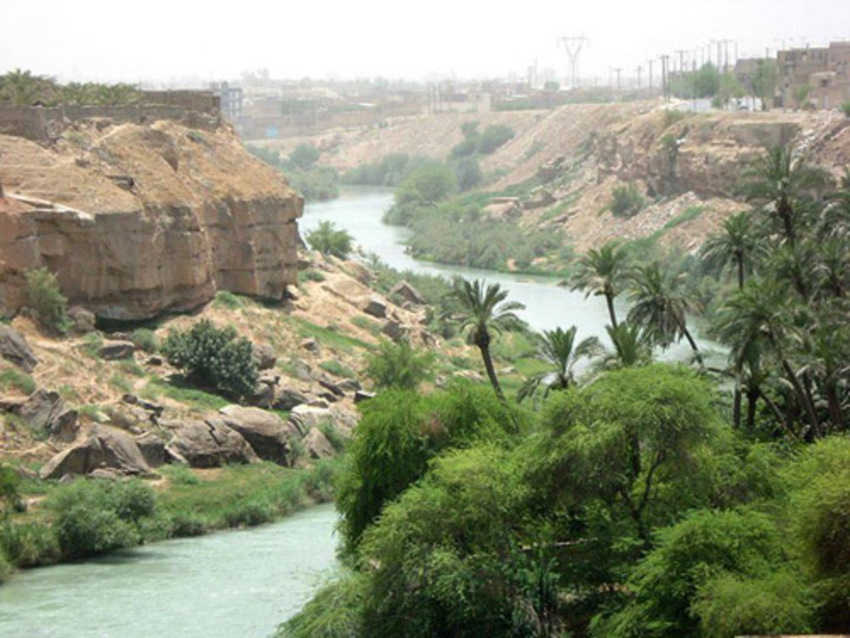
The Khan Garden of Shushtar is located on the western edge of the Gargar River. This garden is one of the remaining works of the Qajar period. The combination of the Gargar River and the beautiful shrubs of the garden has created a beautiful landscape that is worth seeing. If you intend to watch Khan Garden, you can access it from Imam Khomeini Street in the old texture of Shushtar.
Old Houses
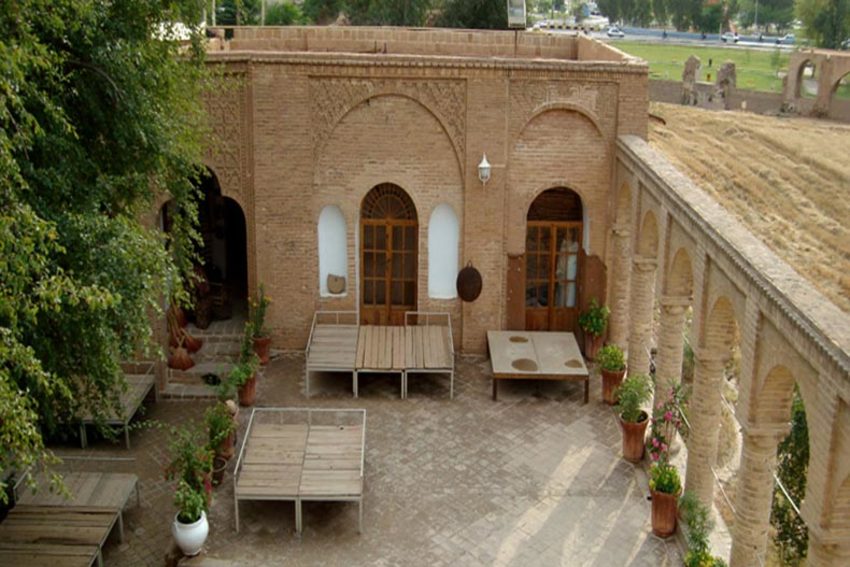
In addition to numerous ancient monuments, Shushtar also houses attractive houses that have remained from the Qajar period.
The unique architecture of southern Iran, along with portraying the cultural characteristics of this region, is everything that the historical houses of Shushtar will give you as a gift. Marashi House, Mostofi House, Moein-al-Tajjar House, Aminzadeh House, Gazer House and Mقدم Historical House are among the most famous historical houses of Shushtar which are introduced as another tourist attraction of Shushtar. If you are interested in old architecture and historical and traditional atmosphere, be sure to visit these houses.
Accommodation in Shushtar
Shushtar, like other major tourist cities in Iran, does not have many hotels and accommodation centers, but this limited number is enough for its current travelers, which you can see in the list below. We hope that in the future, the accommodation facilities of this city will become so abundant and diverse that we can list numerous hotels with different stars in this list.
Shushtar Jahangardi Hotel
Shushtar Traditional Hotel
Farhangian Hotel
Shushtar Guesthouse
Shushtar, a city that must be seen
Shushtar is the city of secrets and mysteries of Iranian history. As I said before, many archaeologists introduce the Shushtar area as the first city of Iranian civilization. The existence of such a magnificent and glorious history distinguishes the position of Shushtar among the cities of Iran. But unfortunately, Shushtar has not received the attention it deserves. The flourishing of tourism in Shushtar and the creation of the necessary infrastructure for it can introduce this historical city as one of the tourism hubs of Iran. We would be happy if you have traveled to Shushtar and have any experience of it, please share it with us and the readers of the gulf city pedia.


